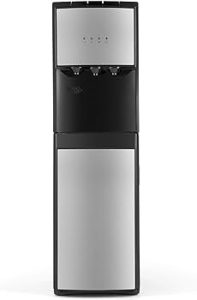Water dispensers are very convenient in every household, they have a lot of general benefits like avoiding wasting time boiling water and encouraging healthy drinking. They also reduce the waste of small bottles that are littered around.
These machines are powered by electricity and include a tank (or tanks) for cold and hot water, a refrigerating system, and a heater. They also come with advanced sanitary features to prevent cross contamination.
UV Filtration
Ultraviolet (UV) water filtration systems use UV rays to kill bacteria, viruses, parasites and other harmful microorganisms that can contaminate water. They’re quick, easy to maintain and have no impact on the taste of the water.
UV radiation passes through the outer layer of the cell body and damages the nucleic acid of the organism’s DNA, disrupting the ability to reproduce. This makes it impossible for the organism to reproduce and infect other cells.
Aside from the standard light bulb replacement, maintenance for a UV system is very minimal. The UV lamp is protected by a quartz sleeve that allows wavelengths to pass through but blocks other particles. The sleeve should be checked and replaced regularly, typically every 2 years.
The best part about UV is that it does not add any chemicals to the water. It is also extremely simple to operate, making it ideal for remote locations or for emergencies where water needs to be cleaned and disinfected quickly. However, UV does not remove dissolved impurities such as heavy metals, salts and chlorine from the water and should always be combined with other filtration methods. Ideally, a pre-filter should be used to ensure that the water entering the UV chamber is clear. This is particularly important if the water source is from an untreated water source such as a well or lake.

Carbon Filtration
Activated carbon is the most common type of filter used to remove taste and odor from water. It works by adsorbing chemicals that don’t stick to the water, including volatile organic compounds (VOCs), chlorine and hydrogen sulfide, which cause unpleasant tastes and odors in drinking water.
During the adsorption process, carbon attracts these chemical pollutants to its surface, similar to how a sponge absorbs gases through its pores. Carbon filters are rated by how small of particles they can remove at the micron level. When choosing a carbon filter, it is best to go with a low micron rating to avoid removing too many beneficial minerals from the water.
It’s important to change your carbon filter regularly, which can be done by turning off your water dispenser and letting it run through a backwash cycle. This will help prevent bacteria and other contaminants from building up in hard-to-reach areas of the dispenser, which can lead to unhealthy and unclean water. Using a clean filter will also ensure that you don’t have mold growing in the spout of your water dispenser, which can spread dangerous organisms like Salmonella and E. coli.
Sediment Filtration
Sediment filters use may loc nuoc uong nong lanh mechanical filtration to physically block unwanted particulate matter from infiltrating your water supply. They act like a screen door – you want the refreshing breeze to flow through your house, but you don’t want dirt and leaves to blow in with it.
A sediment filter’s micron rating indicates what size particles it can remove from your water supply. As a guideline, a 5 micron filter will remove anything visible to the naked eye, while a 1 micron filter will eliminate anything too small to see without a microscope.
Sediments can clog your household appliances, choking out fixtures and valves or shortening their life expectancy. They can also prevent other filtration systems from operating at full efficiency. A whole house sediment filter can keep your household running smoothly and save you money in the long run.
Most sediment filters are made from plant cellulose fibers. They have a large surface area and trap sediment in their layers of material. They can be either pleated or string-wound, depending on their design and the type of material used. Pleated filters, which are accordion-shaped, have multiple filter media layers and a high surface area. They are also washable and reusable. String-wound filters have tightly wound cotton, polyester, or polypropylene string that is layered and twisted around a core. These filters create a gradient density where the outside layer catches larger particles, while the inside layer holds finer debris.
